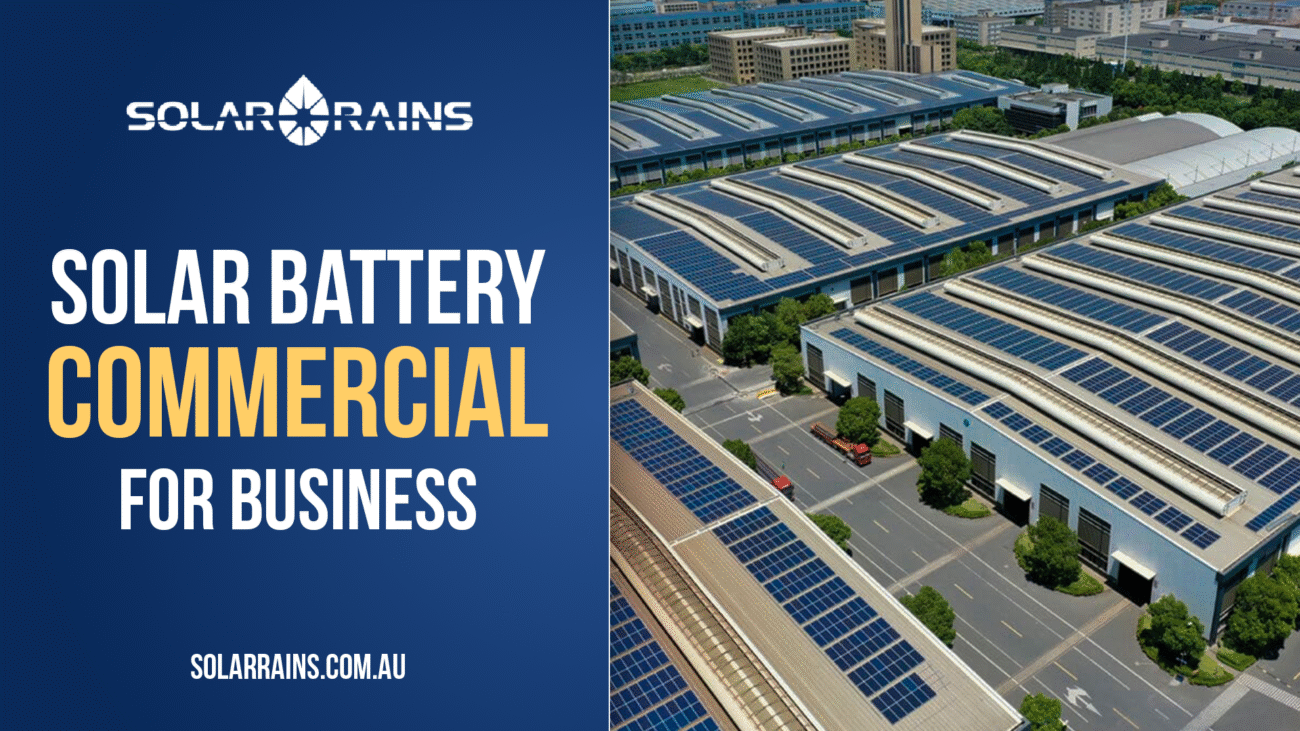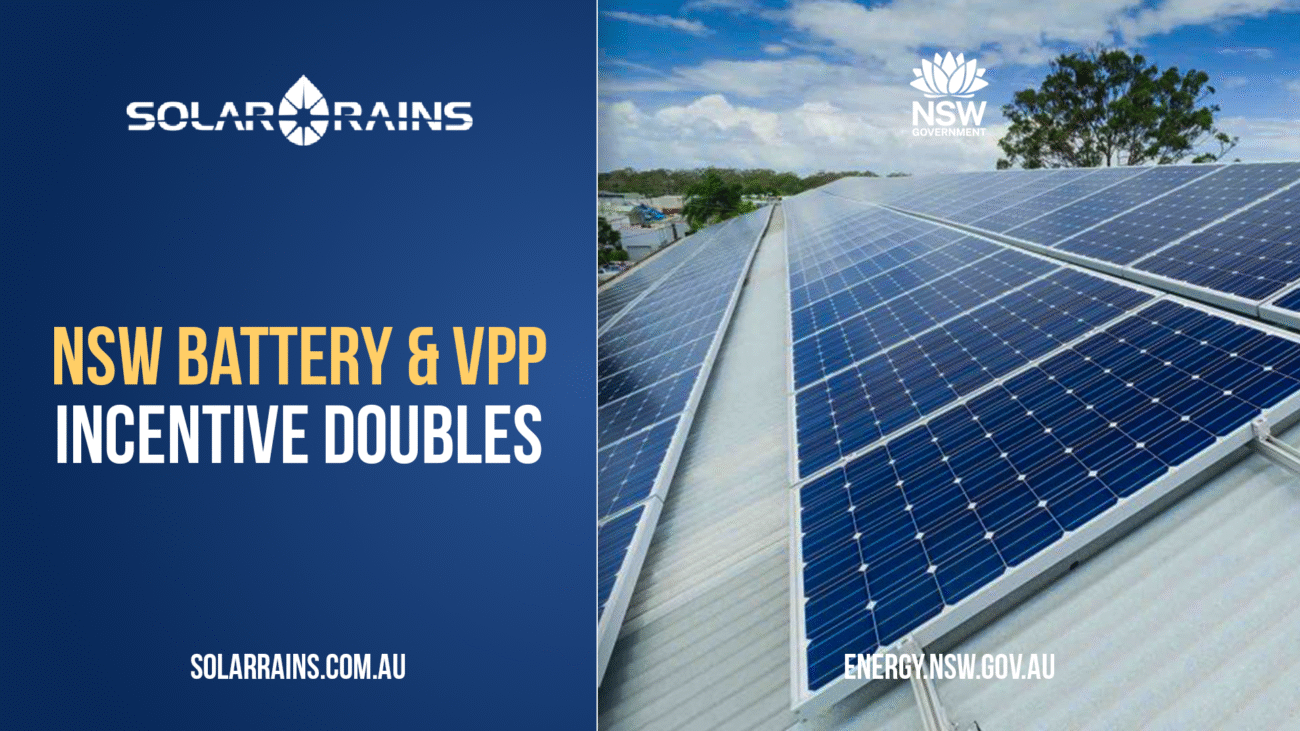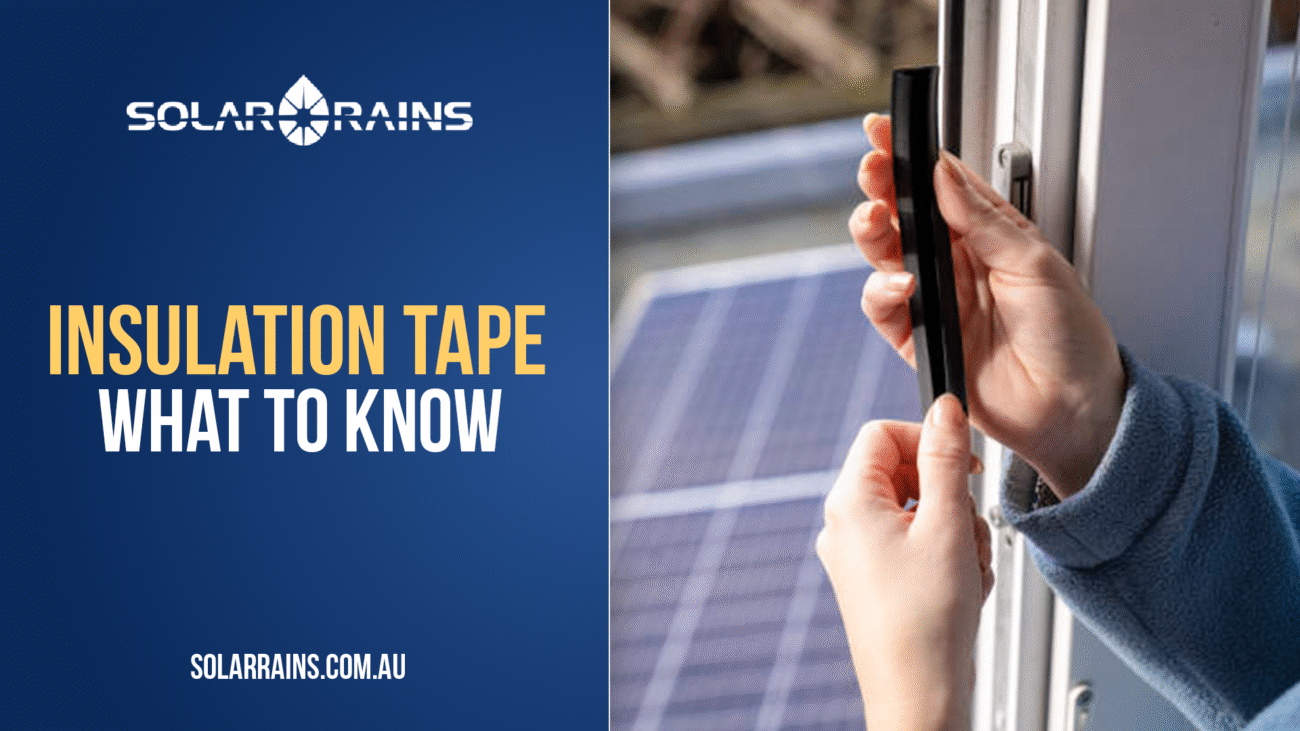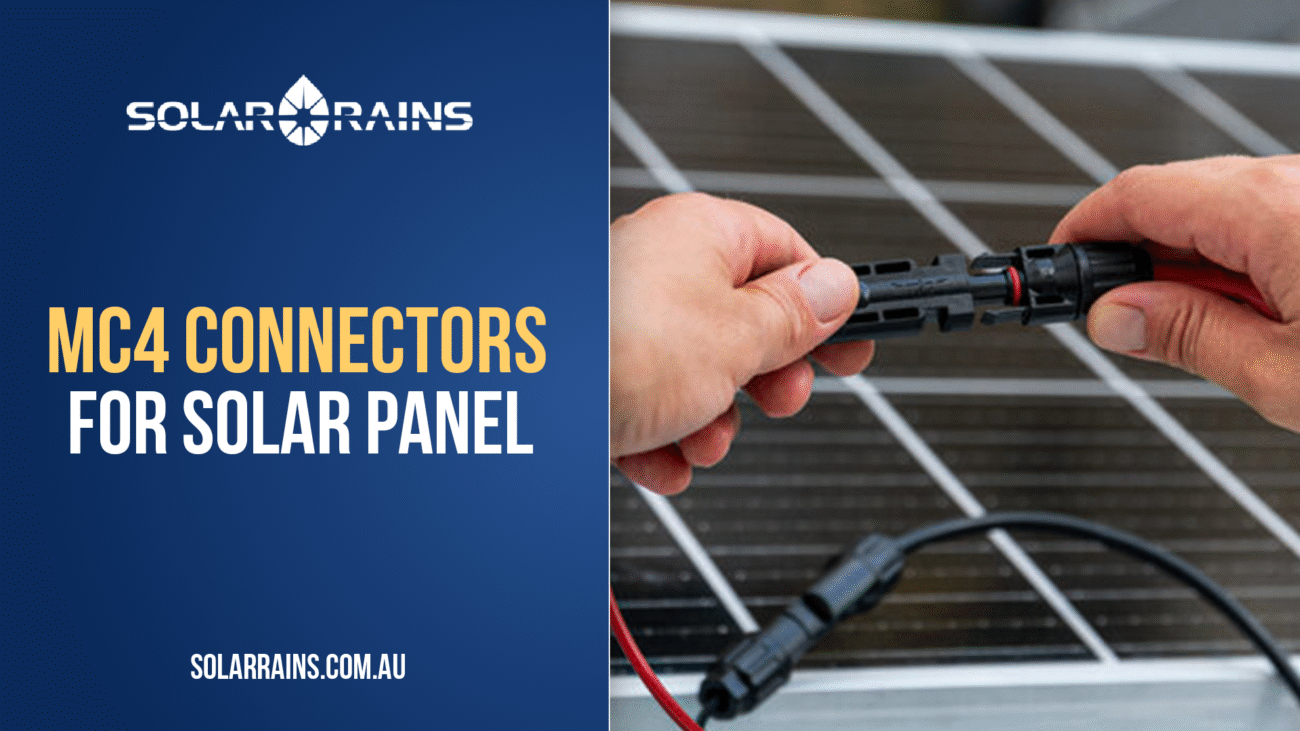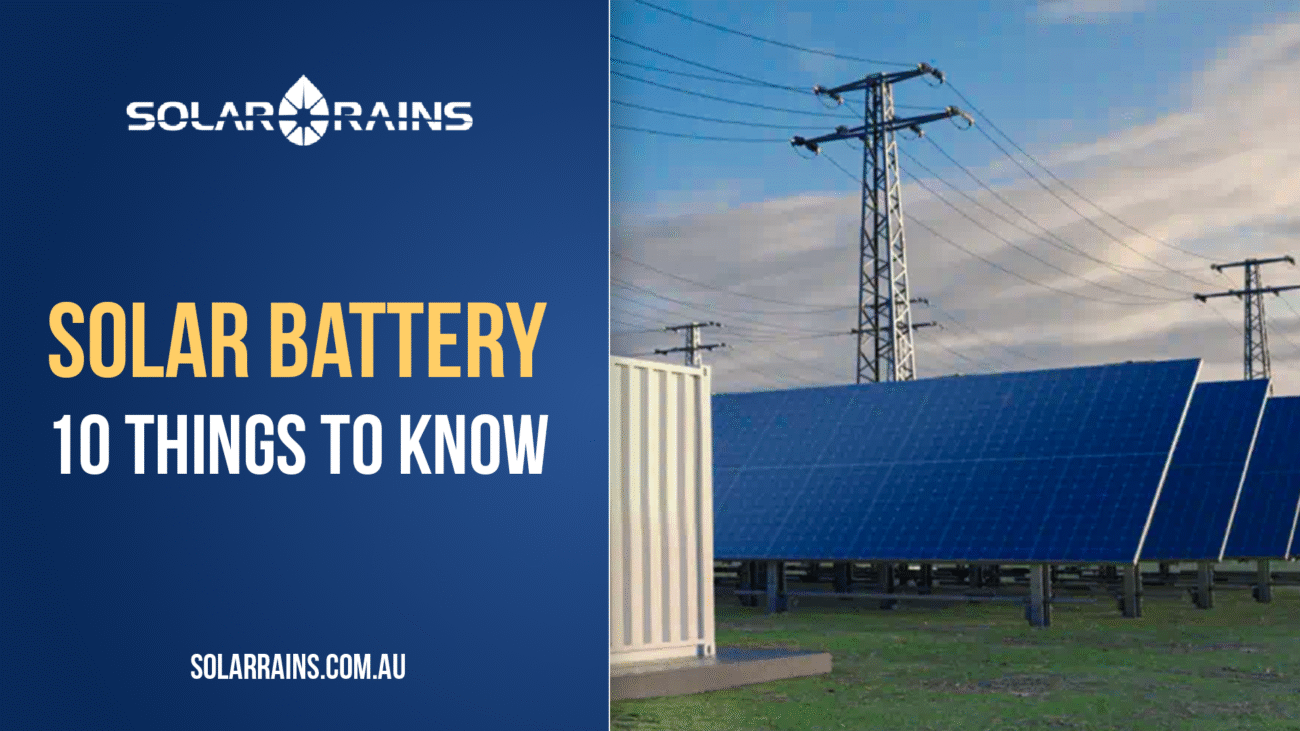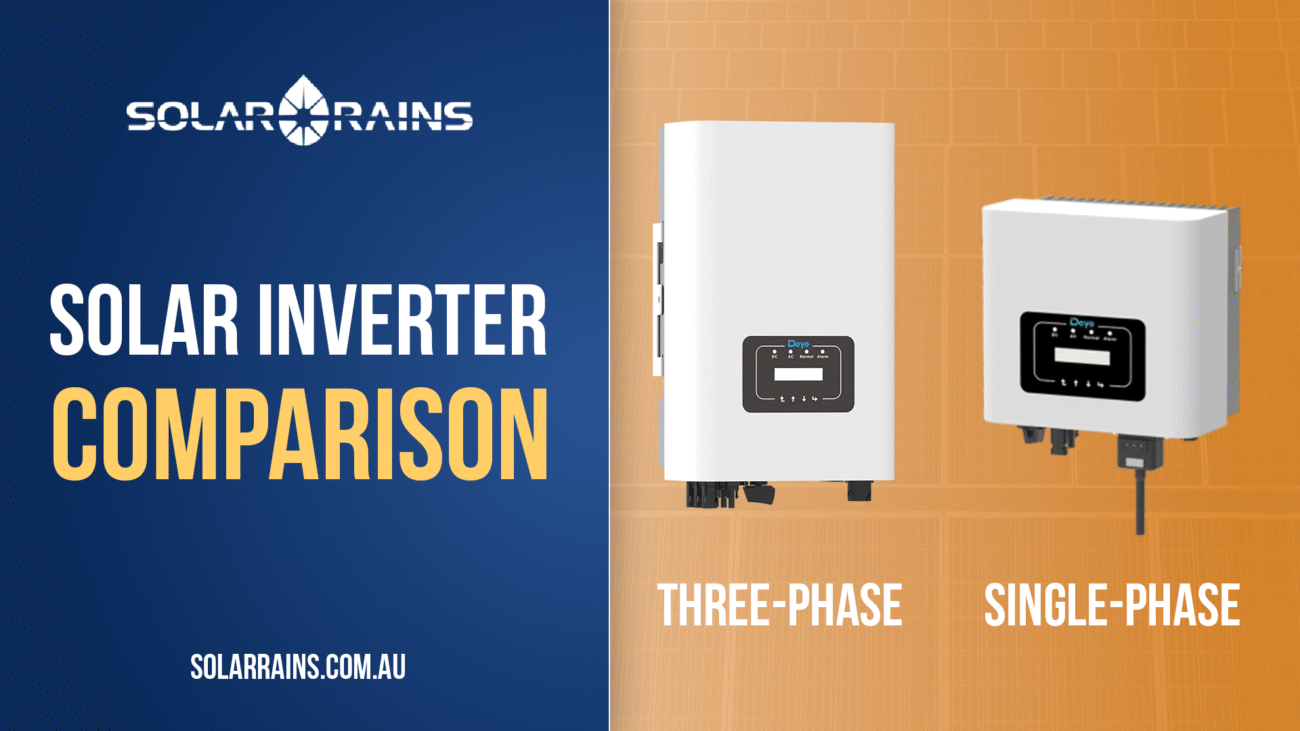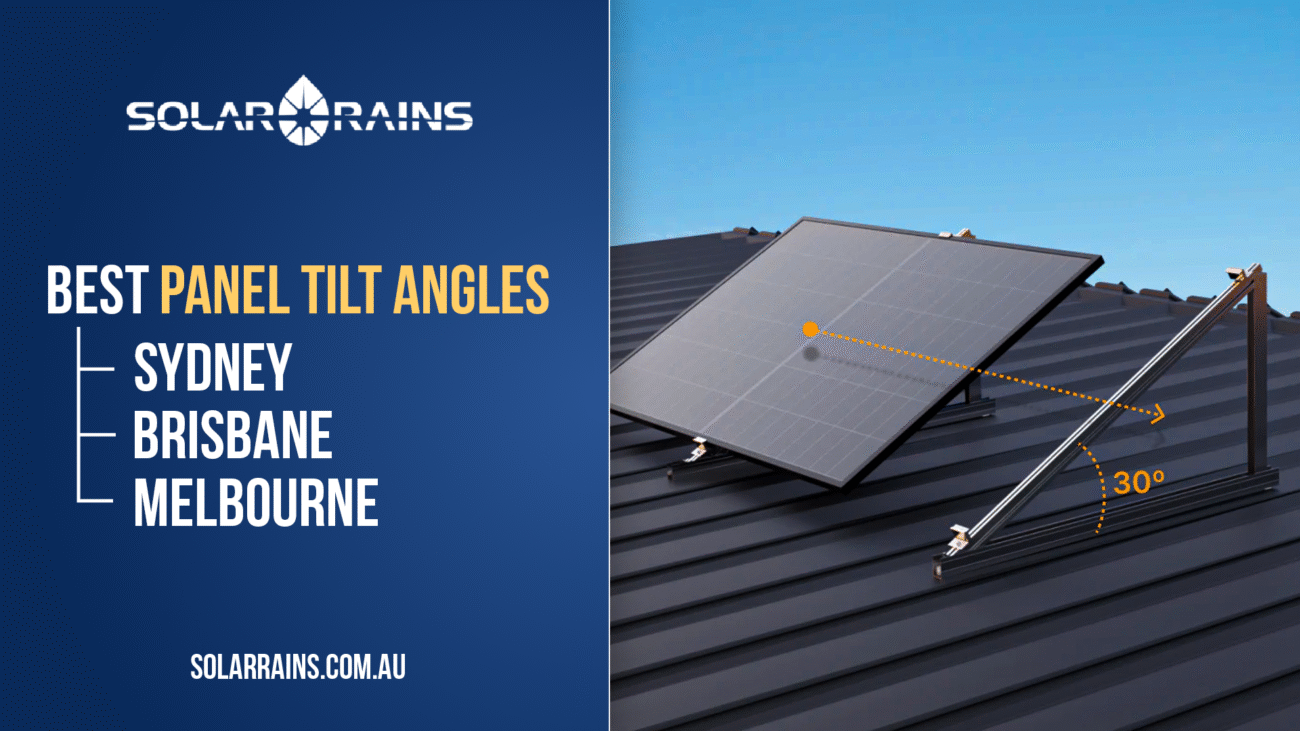Why Energy Storage Matters for Business
As electricity costs continue to rise and grid reliability becomes a growing concern, Australian businesses are exploring more sustainable and stable energy solutions. A commercial solar battery system enables your business to store excess solar power, manage loads more efficiently, and even operate during outages.
Whether you’re running a retail chain, managing a warehouse, or overseeing an industrial facility, investing in a commercial battery isn’t just a green initiative—it’s a smart financial strategy.
What Is a Commercial Solar Battery System?
A commercial solar battery is a large-scale energy storage solution that pairs with your solar PV system to store surplus electricity generated during the day. That energy can then be used during peak demand hours, grid outages, or high-tariff periods.
These systems are typically larger in capacity (50kWh–500kWh+), robust in construction, and designed for commercial energy loads. They can be installed on-site as standalone units or integrated into building energy management systems.
How Does It Work?
The basic components include:
- Battery module (e.g. LFP or NMC chemistry)
- Inverter to manage DC–AC power conversion
- Battery Management System (BMS) for efficiency & safety
- Monitoring software to optimize load usage & billing cycles
Energy flows from solar panels to your business and excess power charges the battery. At night or during peak times, stored power is discharged, offsetting grid usage.
Key Benefits of Commercial Solar Batteries
Reduced Energy Bills
Storing electricity during off-peak hours and using it when tariffs spike can drastically reduce your overall electricity bill.
Backup Power
During outages, a commercial solar battery keeps your critical systems running—ensuring minimal downtime and continued operations.
Improved Power Quality
Advanced battery modules help balance voltage, absorb fluctuations, and provide a consistent energy supply, especially useful in rural or industrial settings.
Demand Charge Reduction
In many commercial electricity plans, businesses are charged based on peak usage. Batteries flatten demand spikes—saving thousands annually.
Sustainability & Brand Reputation
Using solar products reflects your business’s commitment to environmental responsibility, which resonates with customers and partners alike.
What to Look For in a Commercial Battery System
| Feature | Notes |
| Capacity (kWh) | Depends on usage, generally 50–200kWh for small-medium businesses |
| Battery Type | LFP is safer & longer-lasting; NMC is compact |
| Scalability | Modular designs (e.g. Deye battery module) allow flexible growth |
| BMS | Ensures safe charging/discharging |
| Inverter Compatibility | Must match load profiles—consider Deye 3-phase for industrial setups |
| Warranty & Support | At least 10 years with local support |
| Certifications | Look for AS/NZS compliance for Australian standards |
Product Options from Solar Rains
Solar Rains offers top-tier battery solutions tailored for Australian business needs:
Dyness Commercial Battery (71–100kWh)
- High-performance LFP chemistry
- Custom engineering support
- Ideal for manufacturing & logistics facilities
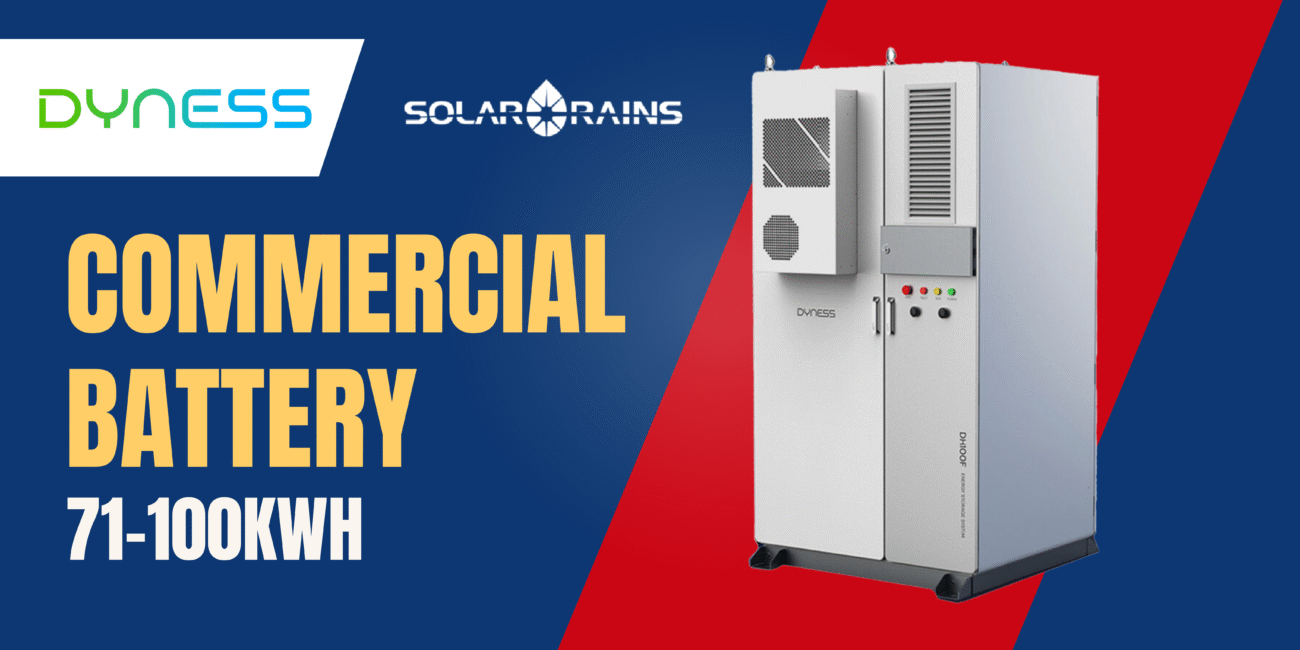
Deye High Voltage Three Phase Hybrid Inverter Series
- Compatible with large-scale commercial batteries
- Smart grid interaction, VPP-ready
- Available from 15kW to 75kW
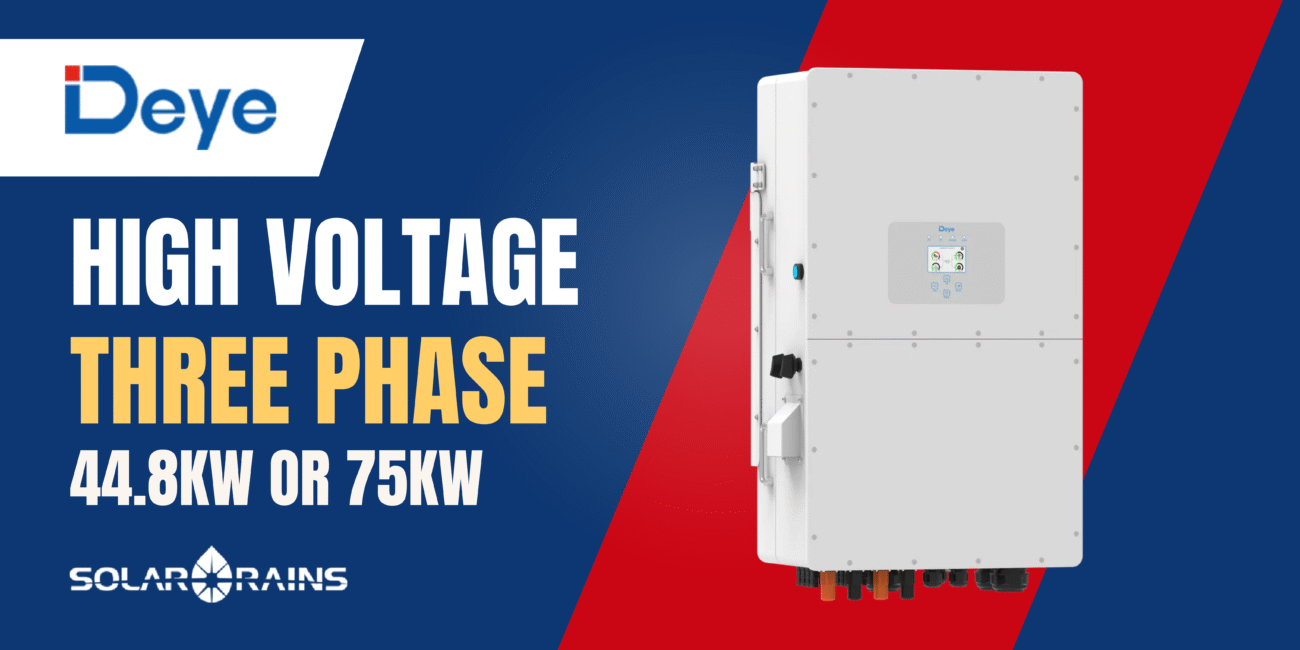
These solutions allow seamless integration into commercial operations and future upgrades via modular battery expansion.
How to Size a Commercial Battery System
A quick rule of thumb:
- Small retail: 30–50kWh
- Medium business/office: 80–150kWh
- Large industrial: 200–500kWh+
Consult your solar supplier to perform a load profile analysis. Solar Rains offers free consultation for new commercial clients.
Cost & ROI Analysis
Average cost:
- 50kWh: ~$40,000
- 100kWh: ~$75,000
- 250kWh+: Custom engineering
Payback period: 5–8 years depending on usage, tariffs, and incentives.
Incentives
- Check state VPP programs & tax depreciation schemes.
- Some businesses may qualify for Clean Energy Finance Corporation (CEFC) funding or low-interest loans.
Maintenance & Monitoring
Smart BMS tools and monitoring software help businesses:
- Track energy usage in real-time
- Identify inefficiencies
- Schedule battery discharge during peak hours
Solar Rains recommends quarterly inspections and annual load checks.
Real-World Use Cases
- Cold Storage Facility in VIC: Saved $20,000/year by peak shaving using a 100kWh battery + Deye hybrid inverter.
- Car Dealership in NSW: Operates fully off-grid during daylight, stores power for evening lighting & security.
- Agricultural Operation in QLD: Uses solar battery to offset generator usage—reducing diesel costs by 70%.
FAQs
Mainly capacity. Small units (5–10kWh) suit homes; large commercial batteries handle 50kWh+ to meet business loads.
Yes, for wider energy stability. But business-scale batteries play a vital role in local resilience & self-sufficiency.
Too small = underperformance. Too large = wasted capital. Proper sizing ensures ROI and meets energy demand.
A modular battery product used in commercial & industrial setups, known for flexibility and strong inverter compatibility.
If your facility uses three-phase power (most commercial buildings do), then yes. Consider Solar Rains’ Deye 3-phase options.
Final Thoughts & Actionable Tips
Choosing the right commercial solar battery can transform your business’s energy strategy. With rising tariffs and increasing pressure for sustainability, businesses can no longer rely solely on the grid.
Key takeaways
- Analyze your energy load before selecting battery size.
- Prioritize safety, inverter compatibility, and certified suppliers.
- Leverage government rebates or VPPs where possible.
Need help choosing a system?
Contact Solar Rains to explore high-performance commercial energy storage tailored to your business.

